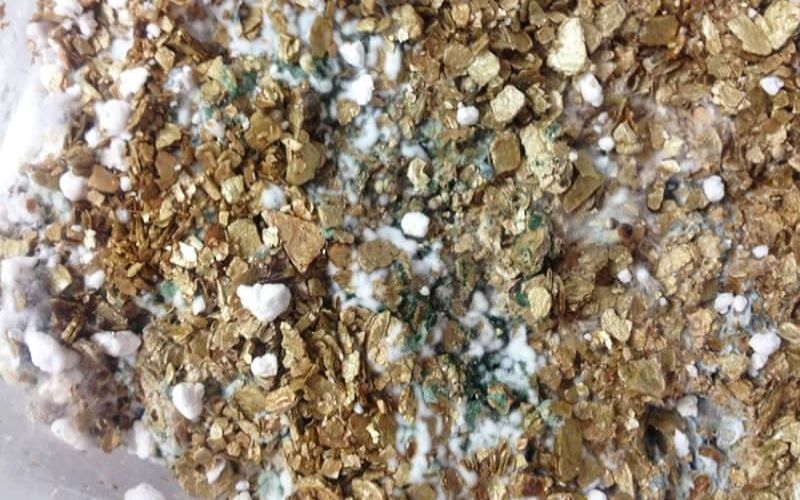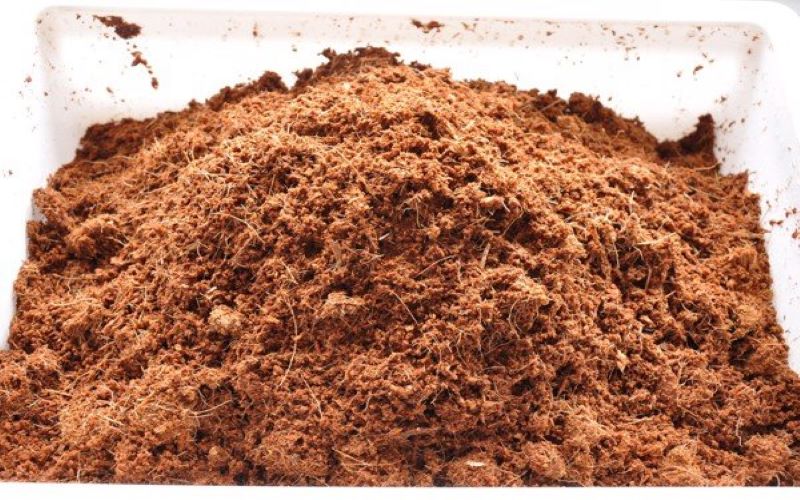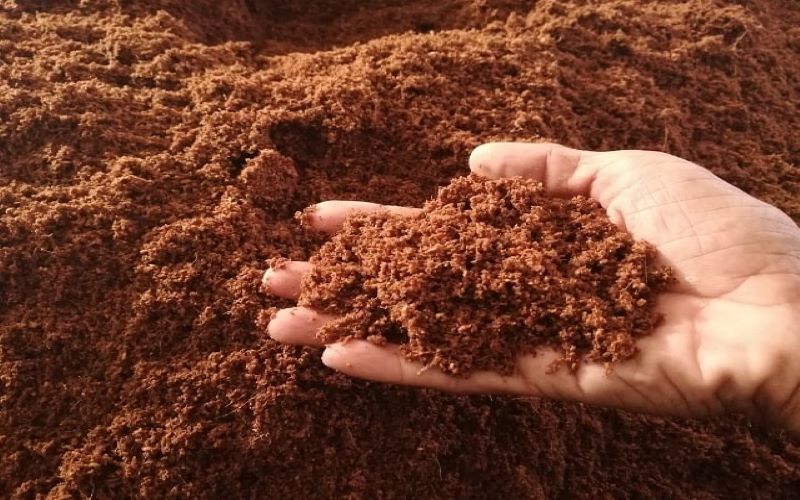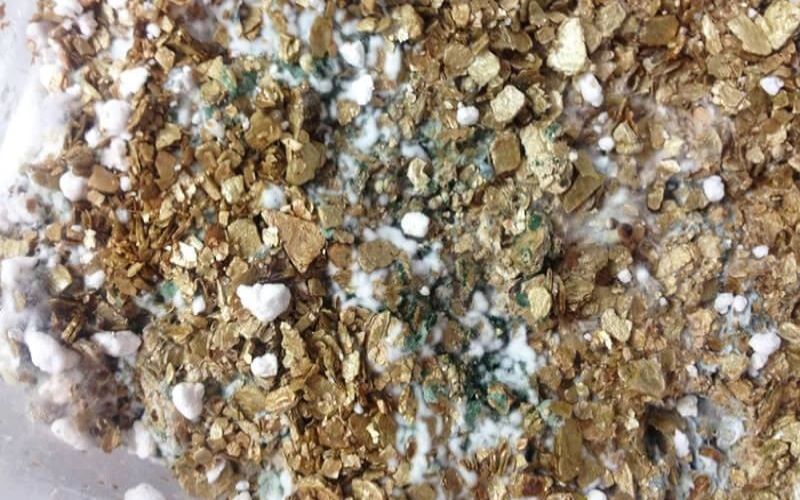Some methods to compost coco coir you need to know
Some methods to compost coco coir you need to know

Coco coir is a growing media which has become too familiar with the agricultural field in general, as well as the cultivation field in particular. Before using coir, we need to treat it correctly, then compost it to get the highest consequence. Many farmers compost coco coir with NPK and lime, while the others do this process by using Trichoderma. The method of composting coir with Trichoderma is more popular because of its efficiency and simplicity. When we compost coir, it will bring a high nutritional value which contributes to the healthy growth of plant varieties. Therefore, let Tropicoco show you the 2 methods of this process through this article.
Uses of coco coir
Coco coir after going through the processing stage will increase the fertility of the soil and help the soil be more aerated. Thereby, it will stimulate the growth of roots, so the plants will grow better as well. Moreover, when we compost coco coir, it increases the capacity of the buffering zone around the plant. Thereby, the roots can resist heat in dry weather and ensure enough moisture in the soil for plant growth.
Coco coir catches much attention because it does not harm the soil. When decomposing, it is also environmentally friendly when it can be decomposed. People can reuse it many times to save money because it can retain the same micronutrients as the original. Besides making the growing media, people often compost coir to make litter, biological padding to reduce odors from livestock manure and toxic gases.
Before composting, we must treat coir
Make coco coir peat
 It is necessary to use a specialized machine to grind the coir. The raw coco coir after seperating from the coconut husks needs finely chopping into peat before we compost it.
It is necessary to use a specialized machine to grind the coir. The raw coco coir after seperating from the coconut husks needs finely chopping into peat before we compost it.
Separation of Tannin
To separate Tannin, you soak coco peat in about 100 liters of water for 2-3 days. Then, you pour out the water and keep the peat. You need to do this process about 3-4 more times to let tannin discharge completely.
Separation of Lignin
You prepare a bucket of clean water and mix it with 2kg of lime. Lime is very effective in separating Lignin. After removing Tannin, you put the coconut peat in the lime water. You stir the peat in the lime water and soak the mixture for 5-7 days to dissolve the Lignin completely. Then you take the peat out and rinse it with clean water. To completely remove the poison from Lignin, you need to repeat this process about 1-2 more times.
Methods to compost coco coir
The conventional method to compost coco coir
 First, to compost 1000kg coir, you need to prepare some kinds of necessary materials such as:
First, to compost 1000kg coir, you need to prepare some kinds of necessary materials such as:
- The treated coir peat: 1200kg
- The NPK manure (5-10-3): 6kg
- Lime powder: 15kg
- Superphosphate: 35kg
- The Effective Microorganism (EM1): 5 litres
- Clean water: 200 litres
After having those kinds of materials, you carry out the following steps:
- Step 1: Mix coco peat with NPK manure, lime powder and superphosphate at the following ratio: 1200 – 6 – 15 – 35(kg).
- Step 2: After mixing well, you spread this mixture thinly and ensure the mixture’s thickness of 25-30 centimetres.
- Step 3: You dilute Effective Microorganism with clean water at the ratio: 6 liters of EM1 – 200 liters of clean water. The Effective Microorganism is a clean microorganism which can replace chemical fertilizers and pesticides.
- Step 4: Use the diluted EM1 to water the mixture in “step 2” to let its humidity reach 80-85%. You should irrigate the EM1 until the mixture’s height reaches 1.2-1.5 metres.
- Step 5: After 4-5 days, microorganisms begin to decompose organic substances when the internal temperature reaches about 60 degrees Celsius. You can water it to reduce the temperature to retain nutrients.
- Step 6: On the 8th day, you can add more water to make the composting mixture reach the moisture of 50-60%. After 30 days, you do this process again. From the 40th day, you can use the coir peat for your plants.
Compost coco coir with Trichoderma
 In addition, we can compost coco coir with Trichoderma. Trichoderma is usually in the powder form, whose main ingredients are beneficial microorganisms. Therefore, it is very popular for agricultural use. Although this method is more effective and simple, the cost of Trichoderma is more expensive. You need to follow the following steps:
In addition, we can compost coco coir with Trichoderma. Trichoderma is usually in the powder form, whose main ingredients are beneficial microorganisms. Therefore, it is very popular for agricultural use. Although this method is more effective and simple, the cost of Trichoderma is more expensive. You need to follow the following steps:
- Step 1: You use treated coco peat to mix well with Trichoderma and ensure porosity for the composting mixture. Then you put it in a sealed bag.
- Step 2: After 3 days, let’s check and stir the mixture. You just do the same thing every 3 days.
- Step 3: After doing the process 7 times, if you see the coir peat turns black and brown, it is good to use.
Some families with limited planting areas can use this method to grow vegetables. The method of composting coir with Trichoderma is especially suitable for the hydroponics growing method.
Conclusion
Tropicoco has shown you some methods to compost coco coir through the article above. There are 2 popular methods of composting coir: compost with NPK manure and compost with Trichoderma. Composting with Trichoderma is far more effective, but takes a higher amount of cost, so you have to think clearly before making a decision. If you want to receive more advices, and buy the treated and composted products in Vietnam, please contact Tropicoco at the following information:
Contact information
Tropicoco – The best substrate
Address: No.20 Ngan Long Villa, Nguyen Huu Tho street, Nha Be dist, Ho Chi Minh City
Email: giathe@tropical.vn
Hotline: +84 983230879
Open Hours: Mon-Sat: 8.00AM-5.00PM; Sunday: Closed

